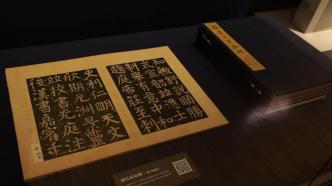
The 115,000-square-meter East Shanghai Library has officially opened to the public in Pudong. Its positioning is a new generation of intelligent compound library, which is not only a "collection building" and a "borrowing room", but also an open cultural and artistic space. This positioning is also implemented in every specific space of the East Hall in the picture above. The Paper has recently approached the newly established "Art Documents Museum" in the East Hall in the picture above. It has been built into a new reading ecology integrating art exhibitions, art reading, and art activities. At the same time, it is also like a small window. Through it, you can see the specific ecology of the entire East Hall.
As the first exhibition of the opening of the Art Archives, "Shibuyu - Stele Post Art and Architectural Culture" is currently on display. The exhibits include Song Tuo's "Confucius Temple Monument", "Jiucheng Palace Liquan Inscription", "Longzang Temple Monument" and other 30 The rest of the collection of precious inscriptions.

Shanghai Library Art Archives Reading Area
Poetic art reading space
The "Art Museum" is located on the west side of the fifth floor of the East Building in the picture above. The high-ceilinged space and semi-open design form a long strip of space consisting of enclosed activity rooms, exhibition halls and open corridors. From north to south, there are activity classrooms, exhibition halls, electronic resource reading area, reading area, and office area. There are two extremely quiet reading rooms in the East Hall, one of which is located at the end of the Museum of Art Archives.

Shanghai Library Art Archive Exhibition Area
"Our entire art archive actually has a design logic." Wang Chenmin, deputy director of the Document Protection and Restoration Department of the Historical Documentation Center of Shanghai Library, told The Paper, "The original design concept was that the north was a relatively large activity room, The exhibition halls... become more and more quiet from north to south. The extremely quiet reading room on the southernmost side is even blocked from communication signals, so readers can withdraw from electronic devices and let their minds empty.”

Activity area
The entire wall on the west side is covered with large pieces of floor-to-ceiling glass, making the whole space light and transparent. Looking down at the window is full of green plants and the city skyline in the distance. In the evening, the sun sets in the west, shedding mottled and shadowy light and shadows, and I feel an indescribable healing.
The "Art Museum" is a new functional area in the museum when the East Hall was built. In the past, the main hall on Huaihai Road did not have such a setting. Why did the East Hall need to create such a functional area? Pictured above is a rich collection of art documents.
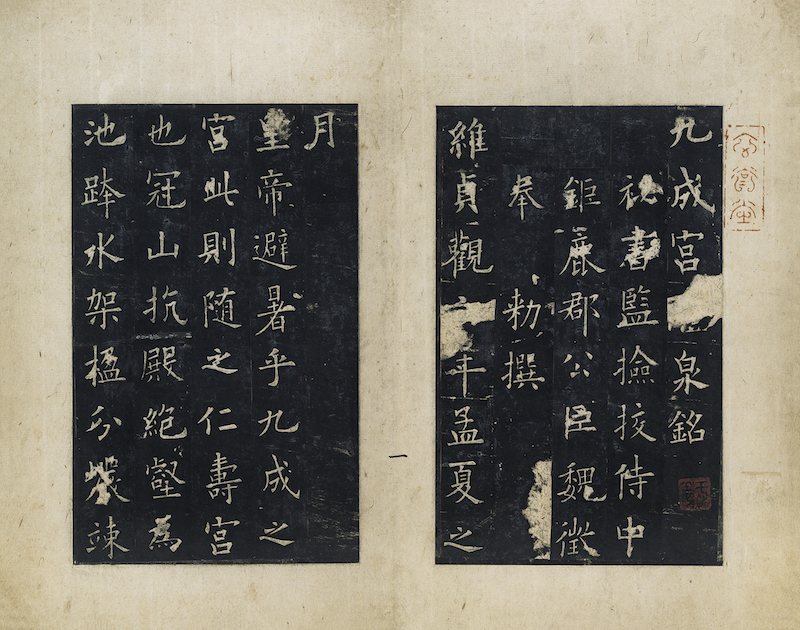
Jiucheng Palace Liquan Ming (Gong Xinzhao Collection)
According to reports, the Shanghai Library has 250,000 pieces of rubbings from past dynasties, including more than 3,000 rare books. The collections cover almost the entire "History of Chinese Inscriptions". The abundance of it and the superb quality make it a "museum of inscriptions". There are more than 4,000 New Year pictures in the collection, most of which belong to the late Qing Dynasty and the early Republic of China. Among them, there are about 300 New Year pictures in Xiaoxiaochang, which are the largest number in similar collections at home and abroad. In addition, the Shanghai Library also has a large number of artistic image documents, including all kinds of old photos, month cards, etc. These document forms vividly convey historical stories in an intuitive image language, reveal the aesthetics of an era for images, and constantly confirm the records of words.

Shanghai Xinzao Railway Freighter Wagon to Wusong Collection of Wu Wenyi Zhai, Shanghai Xiaoxiaochang, Shanghai Library
"Our Historical Documentation Center has a rich collection of art documents of image types. In the past, due to space limitations, it was not possible to display all of them in this museum. The specially established Art Documentation Center in the East Building assumed the function of displaying the collections. A large number of stele inscriptions, New Year pictures, old photos, month cards, etc. are sorted out and displayed in rotation from time to time." Wang Chenmin said.

"Ten Scenes from the New Outlander Field" (back), Shanghai Xiaoxiaochang, collected by Shanghai Library
The current first exhibition and the planned second exhibition are all around the theme of stele inscriptions. Later, there will be exhibitions on the theme of New Year pictures or book bindings to deeply explore the contents of the collection.
"The height of the temple" and "the distance of rivers and lakes"
The first exhibition of the opening of the Art Archives of the East Building selects some inscriptions related to architecture in the collection, and displays them with the theme of "Shibuyu - Inscription Art and Architecture Culture". The exhibition is divided into two areas: the inner and outer exhibition areas. The middle is divided by a mirror wall with "The Story of Yueyang Tower" printed on it. The characters on the wall are extracted from the rubbing of "The Story of Yueyang Tower" by Zhang Zhao, a Qing Dynasty calligrapher in the museum. . "The Story of Yueyang Tower" was written by Fan Zhongyan, a writer of the Northern Song Dynasty, in which the well-known words "the height of the temple" and "the distance of the rivers and lakes" just correspond to the theme of this exhibition - the stele in the back room conveys the lofty ideal of praying for the people. The inscriptions in the outhouse focus on the daily life of the people.
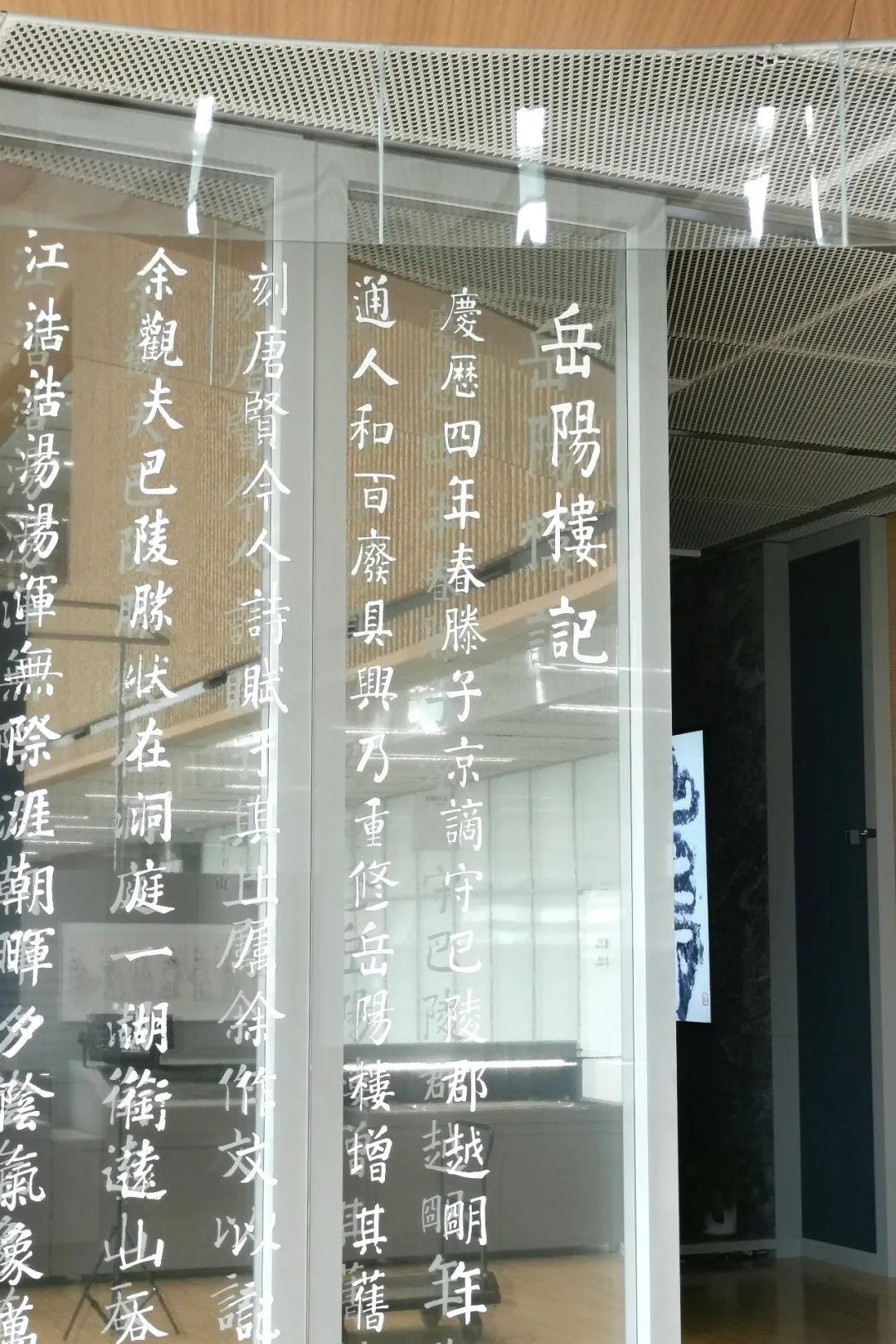
Shanghai Library Art Archive Exhibition Area
Pacing the exhibition hall, facing all kinds of stele inscriptions handed over by famous masters, I couldn't help but calm down. The exhibition consists of six parts: "Liu Shun Juzhen", "Benevolence", "Prosperity", "Learning and Diligence", "People Are Unfavorable" and "Zeyuan Changliu", each of which has a name chosen from In a stele post in this exhibition area, the four words "Lvshun Juzhen" are selected from the exhibition "Jinci Inscription" in this exhibition area. From the work "Wan'an Bridge" in this exhibition area...
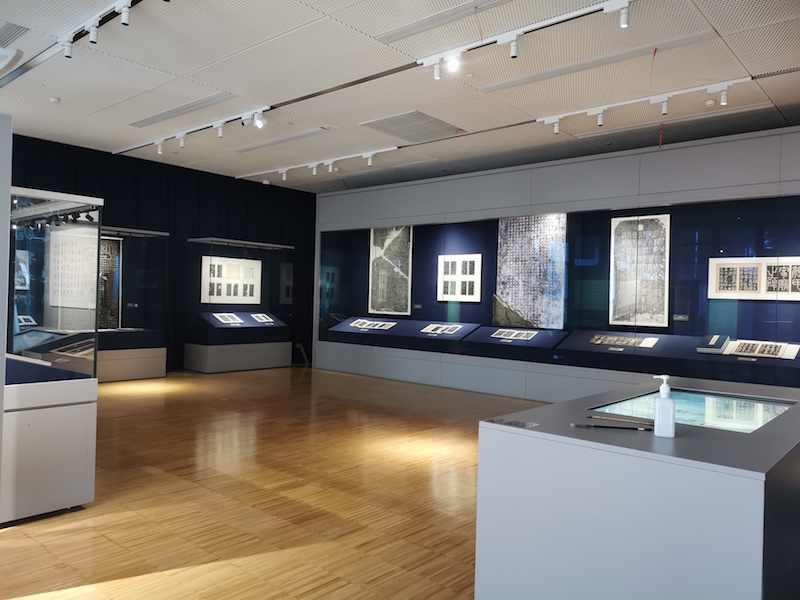
Shanghai Library Art Archive Exhibition Area
The exhibits in this exhibition are rich in content, and more than 30 stele inscriptions have been selected. In addition to the precious collections such as "Opening the Baoxie Road and Cliffs", there are also some modern inscription works, such as "Siquntang Ji", "Shanghai Siming Office's New Beichang Monument and Forehead", etc., through these works, the inscriptions and shapes of the inscriptions are described. The story of the construction of historical sites, temple buildings, shops and farms, reproduces the diverse aesthetic ideals in architectural culture and inscription art.

"Jinci Inscription Remnant" (Zhang Bingzhen's collection)
The "Remainder of Jinci Inscriptions" (collected by Zhang Bingzhen) was engraved and erected in the 20th year of Tang Zhenguan (646). Li Shimin, Emperor Taizong of Tang Dynasty, wrote articles and books, praising the virtues of Tang Shuyu, the founder of Jin Dynasty, for the establishment of the country, and at the same time praising the beauty of Jinyang, the fief of Tang Shuyu. The monument exists in the Jinci Museum of Taiyuan City, Shanxi Province.
"Jinci Ming" created a precedent for running script to enter the monument, and the calligraphy inherits the style of Wang Xi, which is a masterpiece of running script in the history of calligraphy. This Nanpi Zhang Bingzhen Ouzhai old collection of late Ming rubbings. Only the second half of the book survives (the first thirteen lines and the first four characters of the fourteenth line are missing, and forty-one characters are missing under "Qing Temple" in the twenty-fifth line).
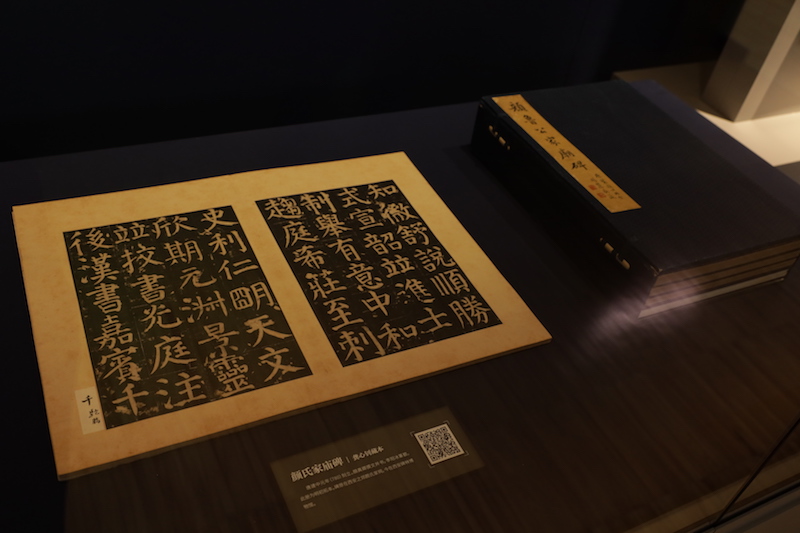
"Yan's Family Temple Stele" (Gong Xinzhao)
"Yan's Family Temple Stele" was written and written by Yan Zhenqing, with seal forehead by Li Yangbing. This stele was originally located in the Yan Family Ancestral Hall on the outskirts of Xi'an, and is now in the Forest of Steles Museum in Xi'an. The original of this work is a rubbing of the early Ming Dynasty, which was handed over by Zhang Yansheng and Gong Xinzhao, and finally collected by the Shanghai Library.
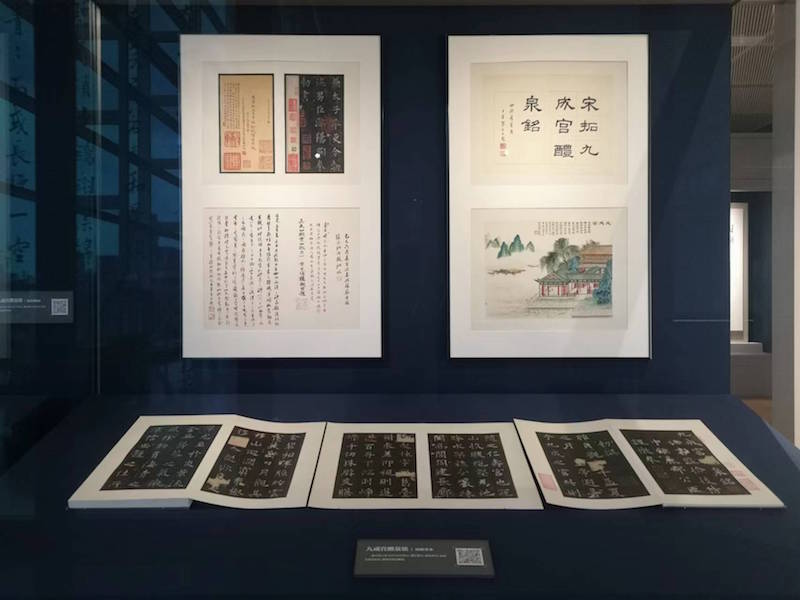
"Jiucheng Palace Liquan Ming" (collected by Wu Hufan)
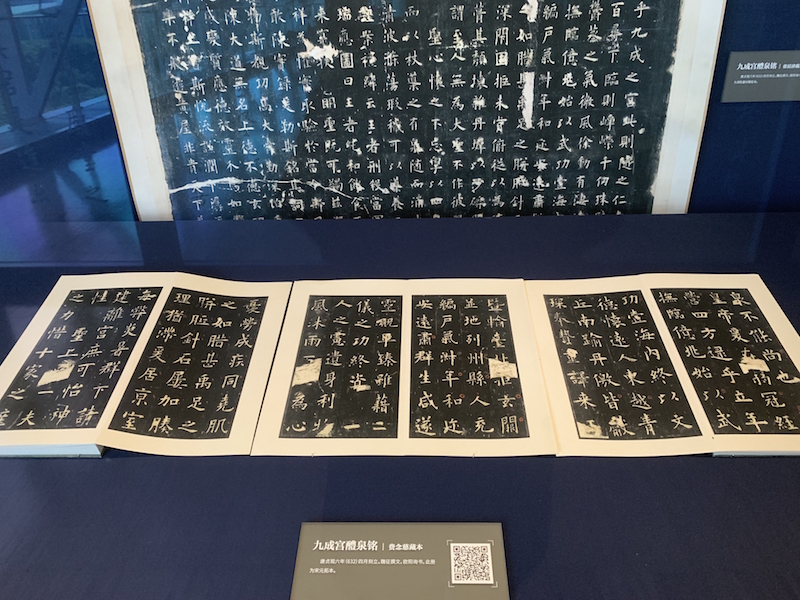
"Jiucheng Palace Liquan Ming" (collected by Fei Nianci)
"Beautiful and Prosperous" is a separate exhibition area set up around the work "Jiucheng Palace Liquan Ming", which displays the "Jiucheng Palace Liquan Ming" Gong Xinzhao Collection, Wu Hufan Collection, Fei Nianci Collection and Zhang Tingji's postscript.
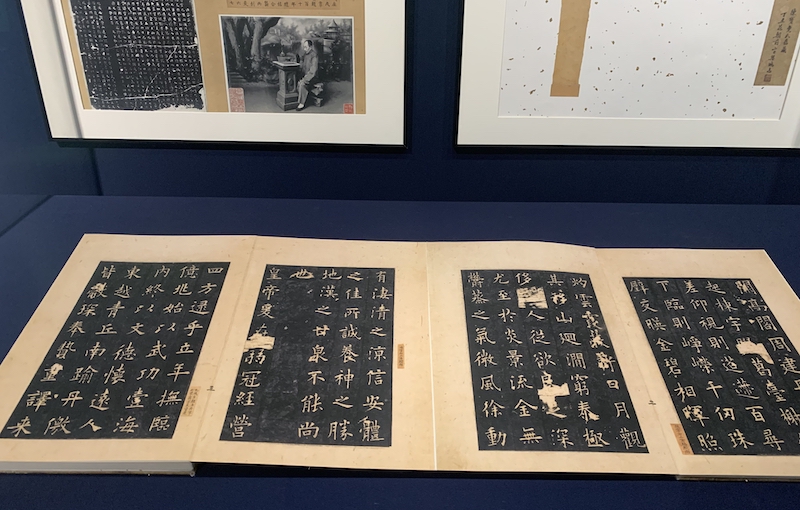
"Jiucheng Palace Liquan Ming" (collected by Gong Xinzhao)
The best version of "Jiucheng Palace Liquan Ming" in the Shanghai Library is Gong Xinzhao's collection. This work is a Tang tablet, which was engraved in April in the sixth year of Tang Zhenguan (632). Wei Zheng wrote the article, Ouyang asked the book. First of all, its preciousness is that it is a Song Tuo Song-bound edition, and secondly, its inscription and binding are very exquisite.

"Jiucheng Palace Liquan Ming" (Gong Xinzhao Collection) ancient brocade panel
On the ancient brocade panel, Weng Fanggang inscribed: "Song Tuo Liquan Ming, the original album in Song Dynasty." The front page has Wang Duo's inscription (written on Kesi): "Ogong Jiucheng Liquan Ming, in the possession of Mr. Jiang's house", followed by Zheng Xiaoxu's inscription: "Northern Song Dynasty Tuo Li Quan Ming, Wang Ti Weng Ba, Chen Bao Dang's Song Bound Book, Zhan Lu Zhai Zhong A", two pages are attached with blank inscription paper and a waiting question. According to Gong Xinzhao's examination and order, this is Jin Dynasty cocoon paper.
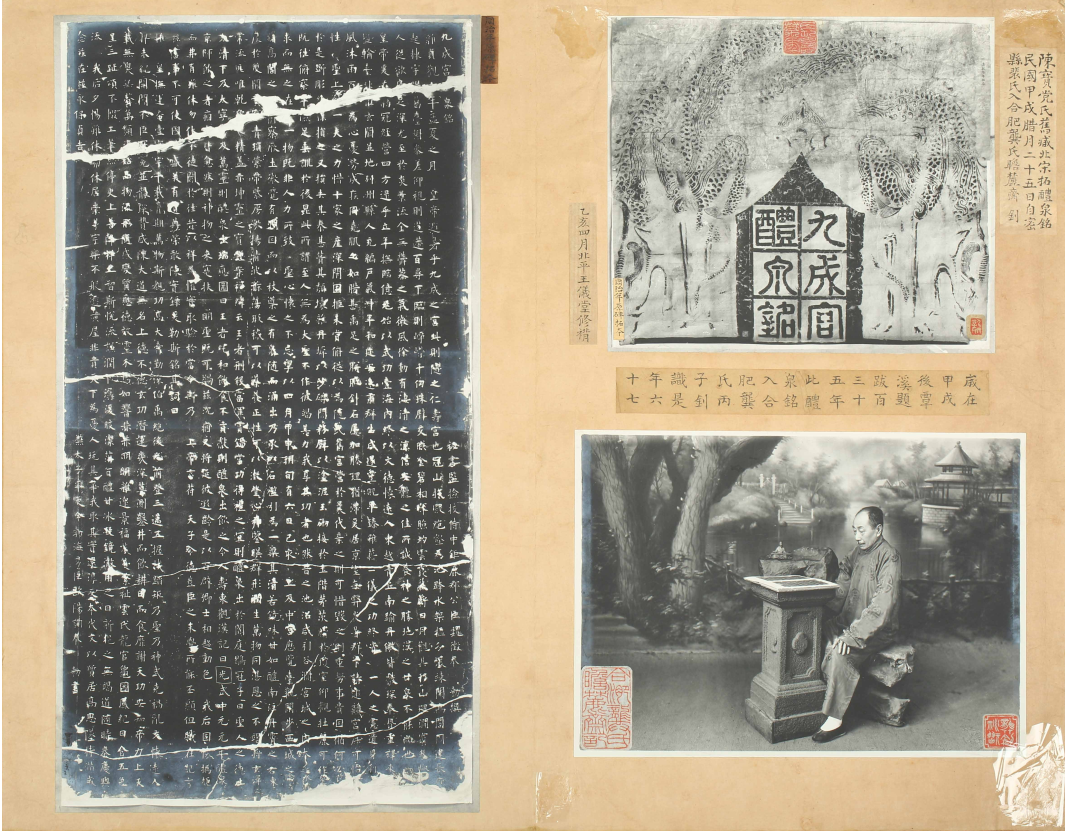
"Jiucheng Palace Liquan Ming" (collected by Gong Xinzhao), there is a photo of Gong Xinzhao admiring the monument at the end of the book, when Gong was sixty-seven years old
In addition, it can be seen from the picture that there is a picture of Gong Xinzhao's own reading tablet. This work was collected by Baoji Party Chongya in the late Ming and early Qing dynasties. It was transferred to Weng Fanggang in the fourth year of Jiaqing, and was purchased by Gong Xinzhao for six thousand oceans in the 24th year of the Republic of China.
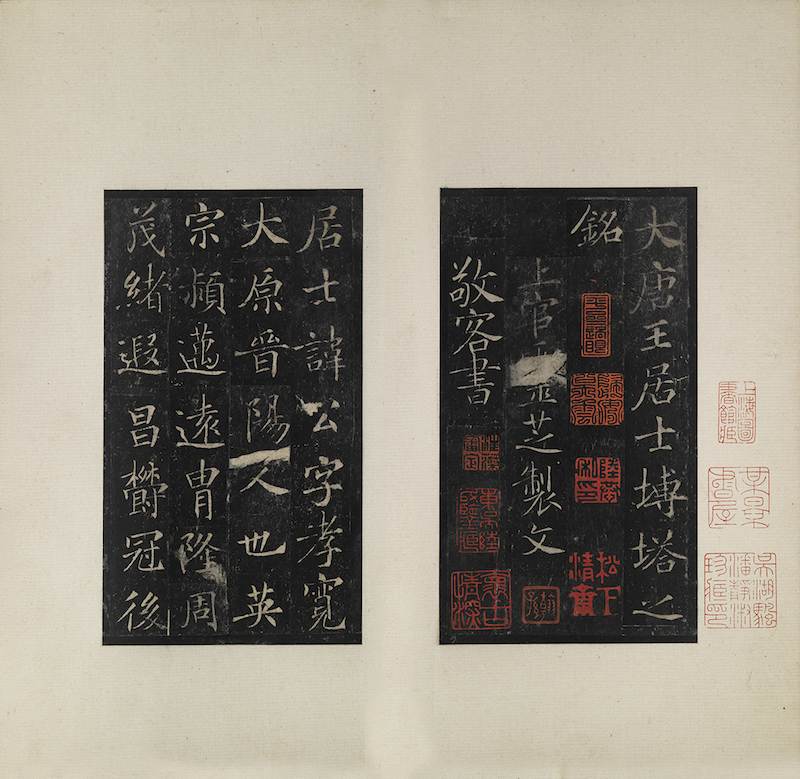
"Inscription on the Brick Pagoda" by Jushi Wang (collected by Miao Yueqian)
"Wang Jushi Inscription on Brick Pagoda" (collected by Miao Yueqian) was engraved in the third year of Tang Xianqing (658). Shangguan Ganoderma lucidum made a text, a guest book. The inscription on the inscription describes the ascetic practices of the disciples of the third-order Buddhist religion in the Tang Dynasty, and they were buried in the Yuzi Valley of Zhongnan Mountain. When it was first unearthed, the inscription of the tower was split into three pieces. Very few pagoda inscriptions have been unearthed in the Tang Dynasty. From the beginning of the Qing Dynasty to the Republic of China, the stele has been repeatedly damaged and damaged by repeated expansions, resulting in a variety of rubbings and versions, which have become the "most complicated stele inscriptions" in the history of Chinese stele inscription identification.
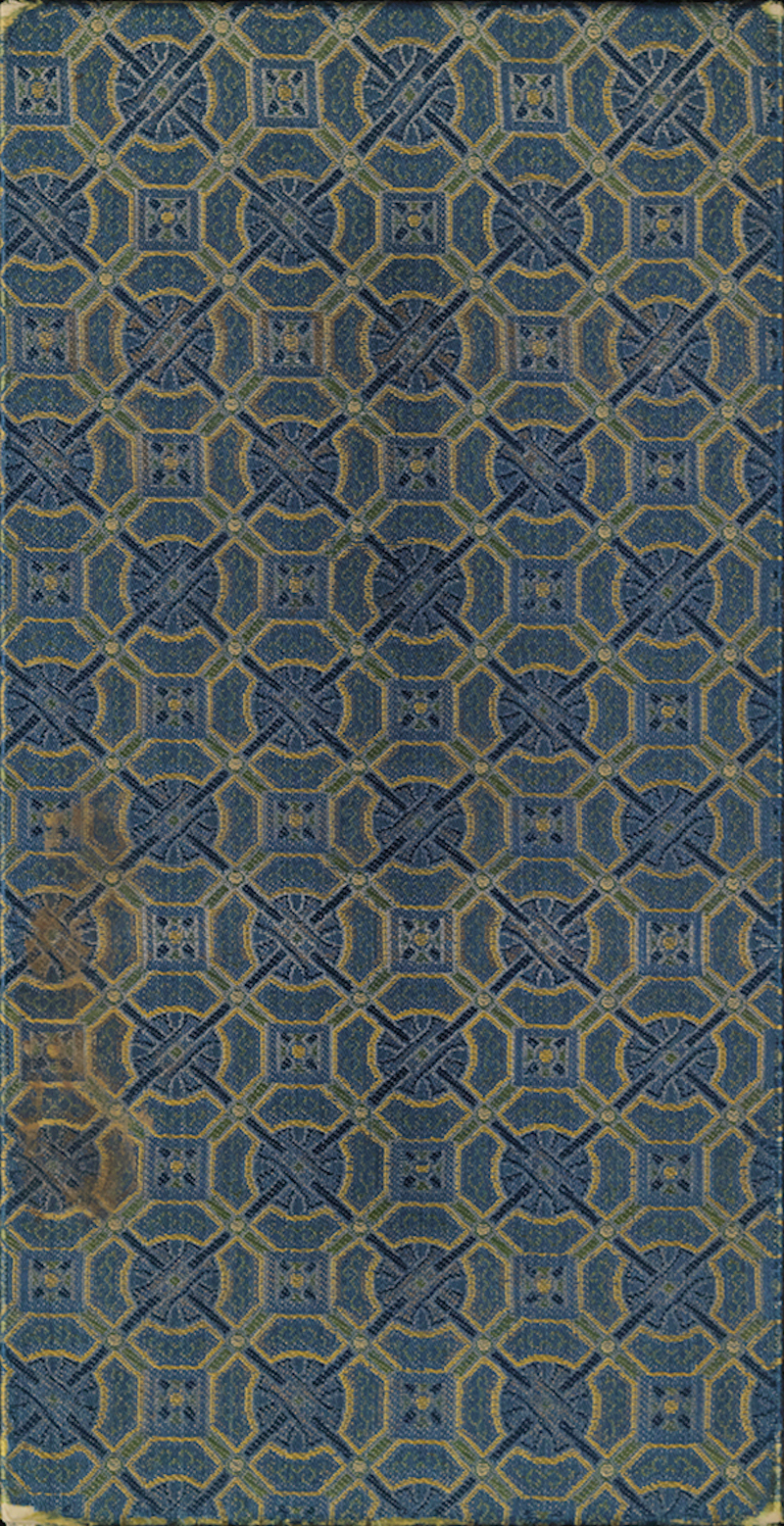
"Inscription on the Brick Pagoda" by Jushi Wang (collected by Miao Yueqian)
This initial rubbing of the three sections is the rubbing of the late Ming and early Qing dynasties. The first rubbing is very rare, and this one is combined with "Mrs. Cheng's Tower Ming".
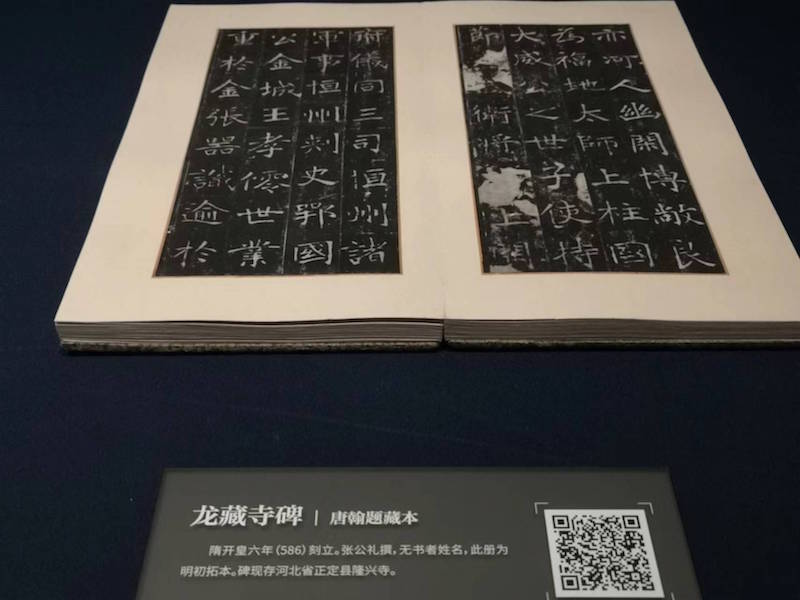
"Longzang Temple Stele" (Tang Han Inscription Collection)
"Longzang Temple Stele" (Tang Han Inscription Collection) was engraved and erected in the sixth year of Kaihuang (586) of the Sui Dynasty. Written by Zhang Gongli, the name of the person without the book. The monument exists in Longxing Temple, Zhengding County, Hebei Province. The inscription on the inscription is written from Chongfo, which not only talks about the way of cultivation, but also refutes the theory that Buddha is false, and finally describes the story of Wang Xiaoxian, the prefect of Hengzhou, who was ordered to rebuild Longzang Temple. The Longzang Temple Stele is a masterpiece of calligraphy art in the Wei, Jin, Southern and Northern Dynasties. It has the reputation of "the first stele in the Sui Dynasty" and is an important document for the study of Buddhist culture. This early Qing Dynasty Huangyun Collection and early Ming extension "Zhang Gongli Wei Lei" is the earliest handed down and the most preserved version.
The external exhibition area mainly selects some inscriptions related to the academy buildings in the collection. For example, The Story of Siquntang on display tells the turbulent story of Daxia University in the war years and the story of returning to its homeland. In 2012, the Shanghai Library discovered a rubbing of the Siquntang stele while repairing the inscriptions in the collection. At this time, the original stele of Daxia University (now the original stele of East China Normal University) had been damaged. The experts helped them re-engraved a memorial tablet of Siquntang.
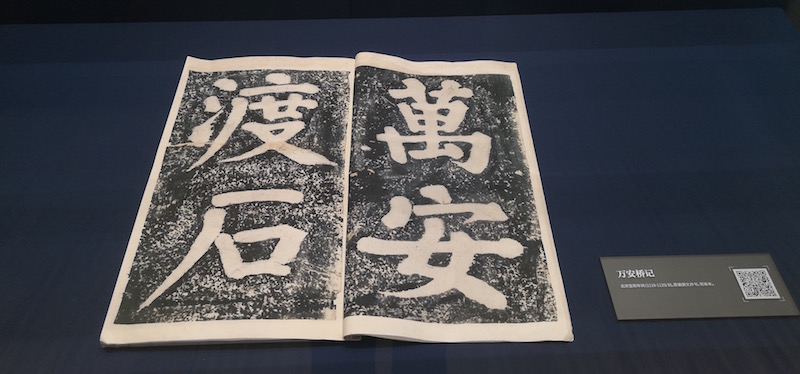
"Wan'an Bridge"
"Wan'an Bridge" was engraved during the Xuanhe period (1119-1125) of the Northern Song Dynasty, and was written and written by Cai Xiang. In the four years of Song Jiayou, Wan'an Bridge was completed in Quanzhou. Wan'an Bridge, also known as Luoyang Bridge, is built at Wan'an Ferry, where the river and the sea meet. "The river is swift and the sea is turbulent", and boat drowning often occurs. After the bridge was built, people could travel across the river on foot, and people's lives were greatly facilitated. The construction of Wan'an Bridge used advanced bridge construction technologies such as "raft foundation", "oyster solid foundation" and "floating beam", showing the wisdom and talents of the working people at that time.
The modern inscription on display "Foundation Stone of the World Building" is also the last exhibit of this exhibition. This work was engraved in the thirty-sixth year of the Republic of China (1947). With the development of the times, stele inscriptions have gradually faded out of people's daily life, and its functional significance has gradually increased. This cornerstone well interprets the relationship between inscriptions and architecture. It is also a key point to be emphasized in this exhibition.
Create a new reading ecology
After watching the exhibition, I slowly walked out of the exhibition hall and came to the reading area. You will find that the books on the first row of bookshelves correspond to the content of the exhibition "Shibuyu - Inscription Art and Architecture Culture". Editions of "Jiucheng Palace Liquan Ming" to "Han Mo Treasures" series of publications. "When readers are viewing the exhibition, they may not be able to touch the exhibits. We put the Calligraphy Treasures Series in the most eye-catching place on the bookshelf. Readers can go to read the publications and learn more about the collection of fine inscriptions." Wang Chenmin said.
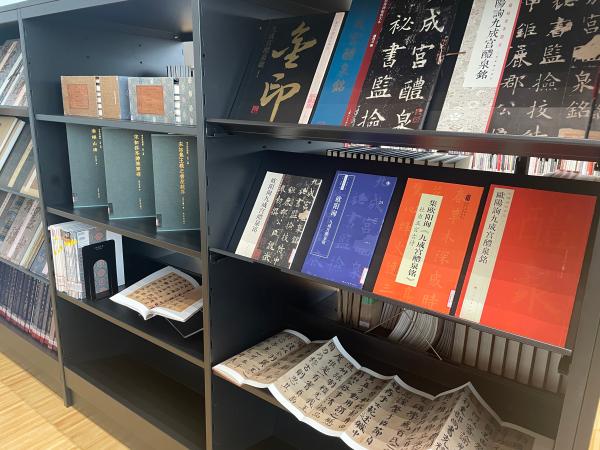
Inscription publications on the first bookshelves of the Art Archives
Wang Chenmin told The Paper that the goals of their exhibitions are different from those of museums. Cultural and museum organizations may focus on displaying cultural relics and artworks, but what they do is a reading promotion exhibition, which is more for readers to read. "We hope to realize the concept of integrating exhibition and reading through the details of the placement of books on the bookshelf, and combine the exhibition area, activity area, and reading area to create a new reading ecology."

Art literature catalogues in the reading area of the Shanghai Library Art Archives
Going deeper into the reading area, readers will find more surprises: rows of beautifully bound large-format picture albums are displayed in rows on the bookshelves, whose categories include painting, tablet stickers, calligraphy, photography, architectural sculpture, arts and crafts , art history, art magazines, etc., which also include a large number of foreign books, involving English, French, German, Korean, etc.; there are also a large number of complete sets of art books, such as the "Chinese Painting Famous" series, which are usually expensive , For ordinary readers, it is unlikely to buy a complete series of albums by themselves, so the above picture, as a public collection institution, just happens to play its function of providing reading services to the public.
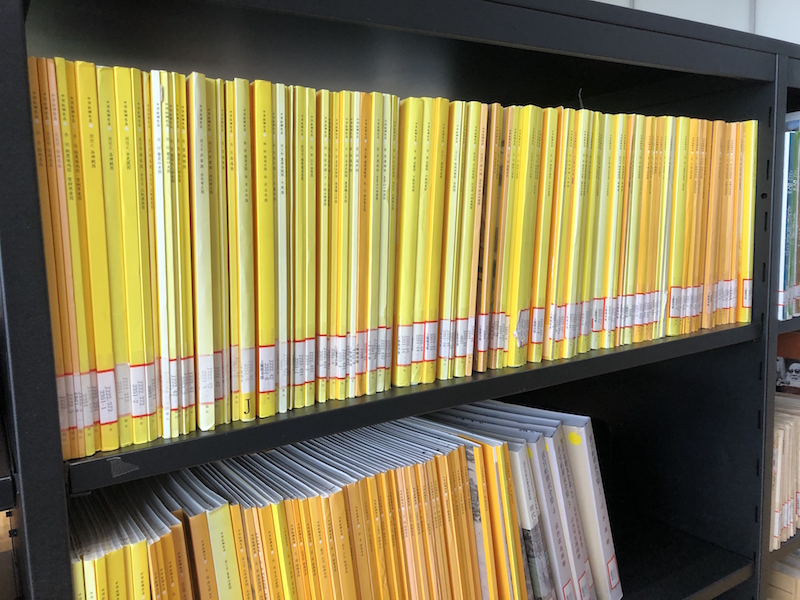
A complete set of art books "Famous Chinese Paintings"
"Many of the books here used to refer to borrowed books, and there were also artistic image documents from the Historical Documentation Center. In the past, due to space constraints, many of them were not displayed. With the opening of the East Hall, we allocated another batch to purchase There are a batch of them, which can be freely picked up by readers in the reading area of the Art Archives." Wang Chenmin told The Paper.

Gallery of Japanese Ukiyo-e Art in the Reading Area of the Art Archives
In addition to exhibitions, publications, and electronic resources reading area, there are also three interactive multimedia exhibition items in this area: "Copying of inscriptions on inscriptions", "Miaoshou Yannian" (repairing inscriptions on inscriptions), and "Zuiyu Lianzhu" (collages of inscriptions on inscriptions). In addition, according to the exhibits, the three inscription works of "Jiucheng Palace Liquan Inscription", "Chenghuang Temple Monument" and "Longzang Temple Monument" were selected to create a VR project of "Stone Language in the Spiritual Realm" to help the readers' reading obstacles to traditional and traditional Chinese characters.
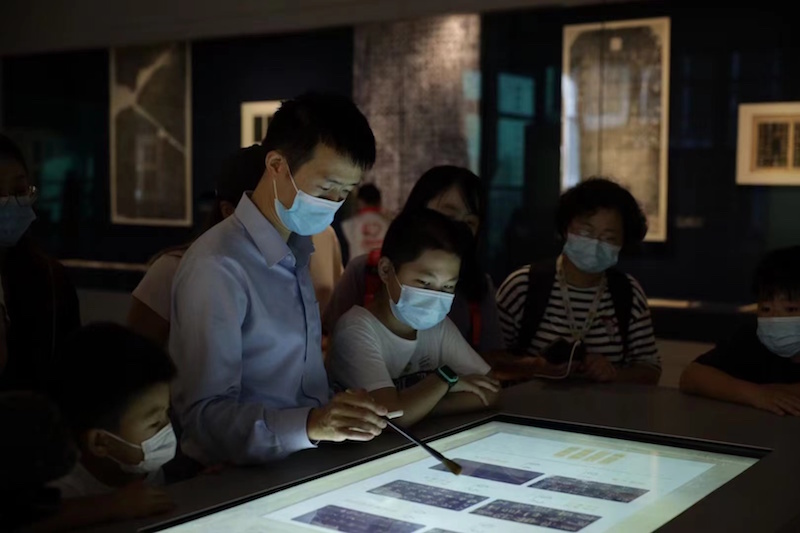
"Copying of Inscriptions" Multimedia Interactive Exhibition Item
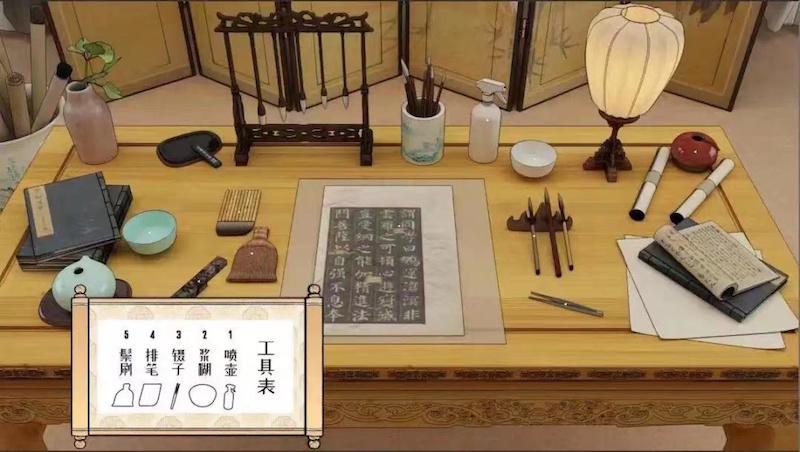
Multimedia interactive exhibition item of "Skillful Hands Prolonging the Year" (restoration of inscriptions on tablets)
"Here I feel like a mouse fell into the rice vat." A reader at the scene told The Paper with a smile, "Here you can not only find the most cutting-edge art information, but you can also look at the original inscriptions in the exhibition hall, and then come back to I flip through its publications in front of the bookshelf, and then I can take my children to write calligraphy on the interactive VR device, and play how to repair ancient inscriptions... This is an all-round reading experience."
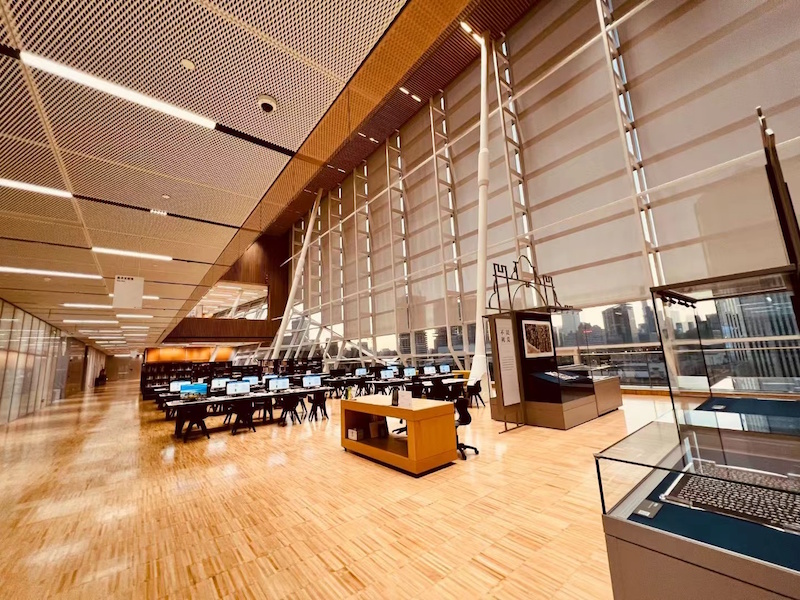
The quiet Art Archives Museum is closed on Mondays
Wang Chenmin told The Paper that the goal of library work is to create a good reading environment for the public, not only to provide readers with books themselves, but to make readers fall in love with exhibitions, games, activities, or beautiful books. Read this thing, "This is the meaning of the existence of the museum's archives."


